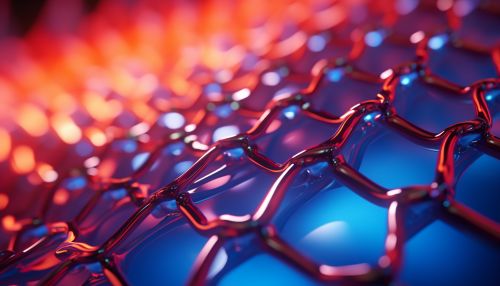Electroactive polymers
Introduction
Electroactive polymers (EAPs) are a class of polymers that exhibit a change in size or shape when stimulated by an electric field. A characteristic feature of EAPs is their operational similarity to biological muscles, leading to their nickname "artificial muscles".


Classification
EAPs can be broadly classified into two categories: ionic and electronic.
Ionic EAPs
Ionic EAPs are polymers that are activated by an electrically induced change in ionic concentration. They include types such as ionic polymer-metal composites (IPMCs), conductive polymers, and ionic polymer gels.
Electronic EAPs
Electronic EAPs are polymers that are activated by an electric field or induced displacement of electrons and ions within the polymer. Examples include dielectric elastomers, liquid crystal elastomers, and piezoelectric polymers.
Properties
EAPs possess unique properties that make them suitable for various applications. These include large deformation, flexibility, low density, high response speed, and the ability to operate without the need for mechanical parts.
Applications
EAPs have found applications in a wide range of fields, including robotics, medical devices, and energy harvesting.
Robotics
In robotics, EAPs are used to create more flexible and adaptable robotic systems. They are particularly useful in the development of soft robots, which mimic the flexibility and adaptability of biological systems.
Medical Devices
In the field of medical devices, EAPs are used in the development of devices such as artificial muscles and minimally invasive surgical tools.
Energy Harvesting
EAPs also have potential applications in energy harvesting, where they can be used to convert mechanical energy into electrical energy.
Future Directions
Research into EAPs is ongoing, with the aim of improving their performance and expanding their range of applications. Future directions include the development of new materials and fabrication techniques, as well as the integration of EAPs with other technologies.
